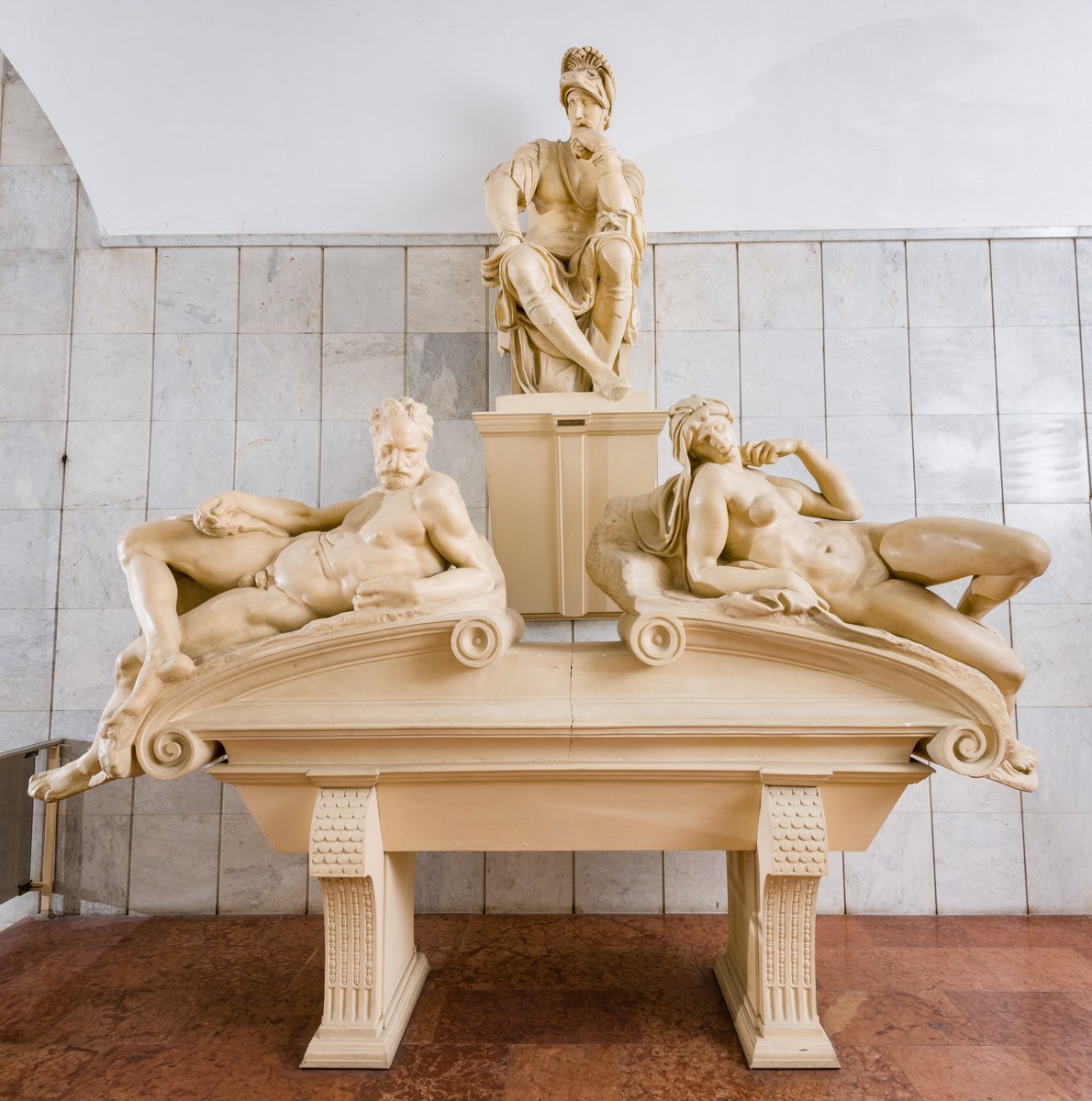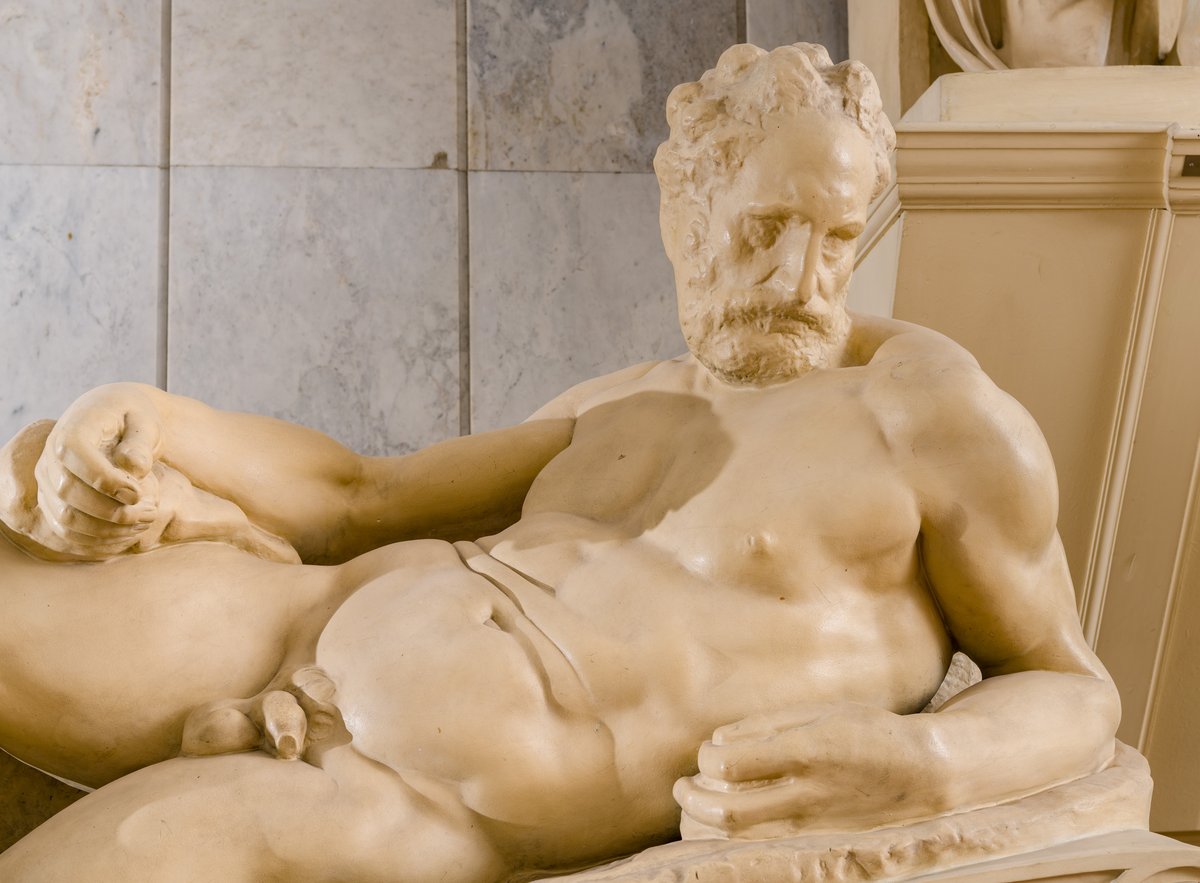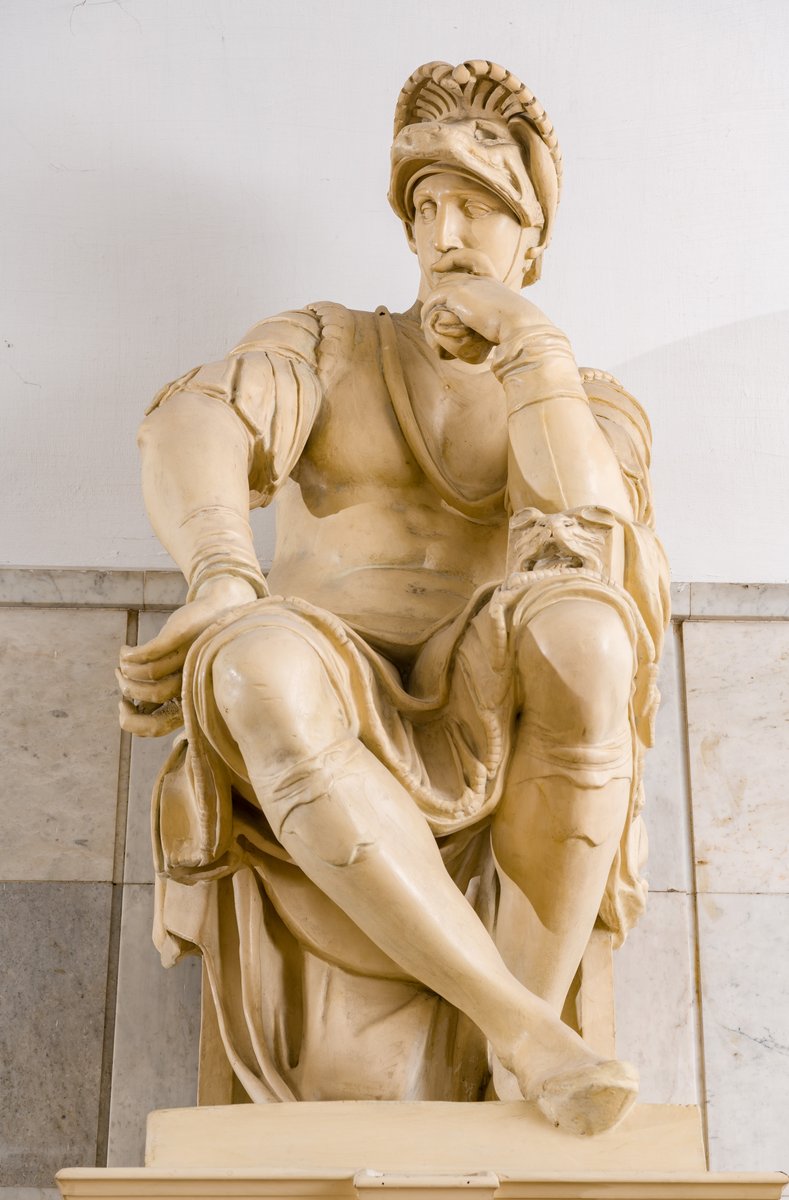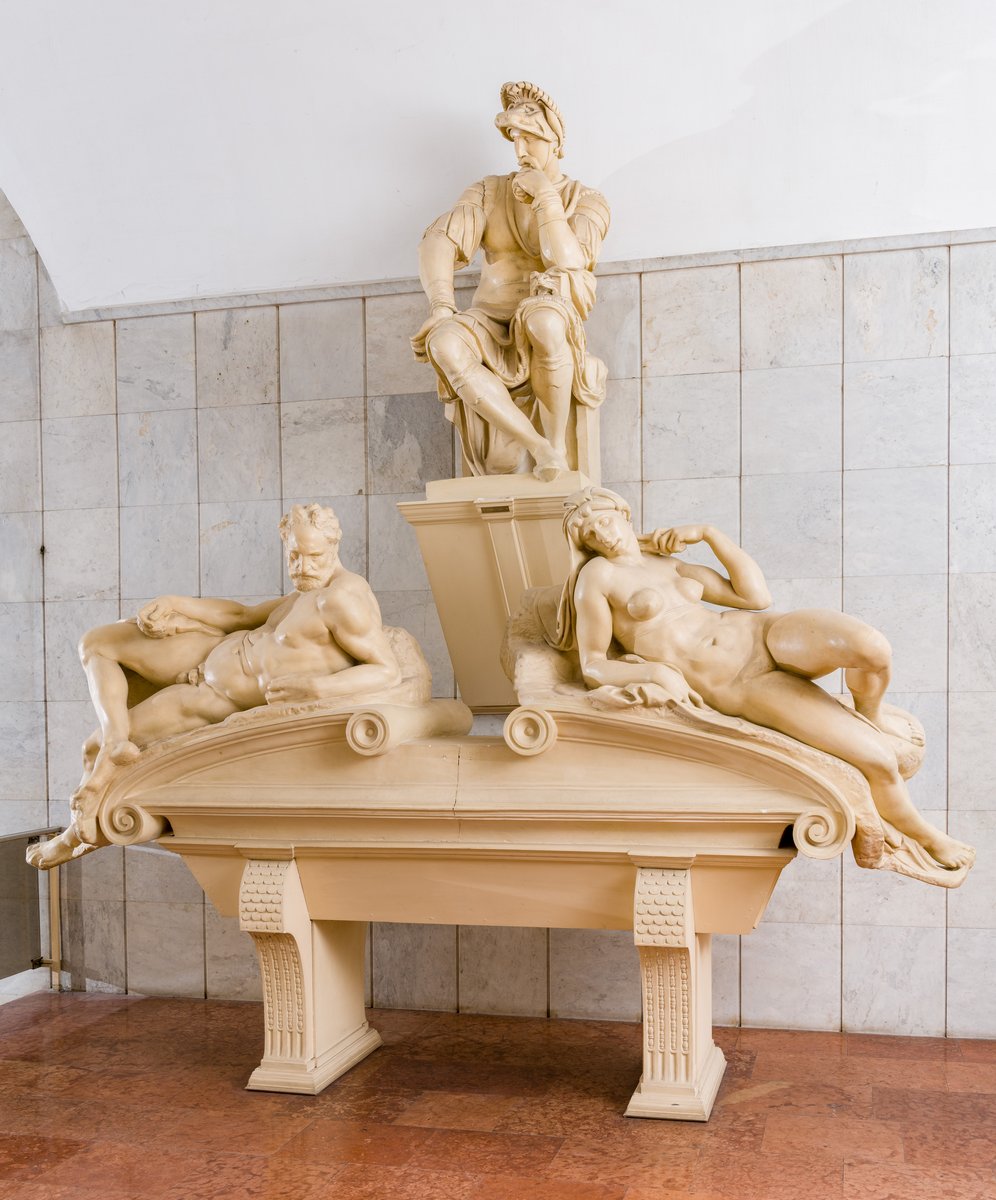Tomb of Lorenzo de' Medici
Michelangelo Buonarroti, August Gerber (cast maker)- Artist
-
Michelangelo Buonarroti
Caprese, 1475 – Rome, 1564
August Gerber
(cast maker)
Köln
- Dated
- 1519–1533 (original), 1906 (cast)
- Classification
- sculpture, tomb, plaster cast
- Medium
- plaster cast
- Dimensions
- 440 × 438 × 146 cm
- Inv.no.
- Rg.231
- Department
- Sculptures - Plaster casts
- Current Location of the Original Artwork
- Italy, Florence, Medici Chapel of San Lorenzo church
The Medici funerary chapel and its decorations was commissioned from Michelangelo in 1519 by Cardinal Giulio de' Medici (1478–1534), afterwards Pope Clement VII. The figure of Lorenzo de' Medici (1492–1519), Duke of Urbino is seated in a niche above a sarcophagus, on which the allegorical figures of Dawn and Dusk recline. On the opposite wall there is the companion tomb of Lorenzo's uncle, Giuliano de' Medici (1479–1516), Duke of Nemours in similar structure. The Museum of Fine Arts was the only cast collection which purchased the entire plaster casts of the two Medici tombs, ordered in 1906 from August Gerber at Cologne. In the Museum of Fine Arts, built between 1900 and 1906, the Michelangelo Room was specially designed to provide proper placement for these tombs, in a similar way as those funerary monuments are arranged in the Florentine Medici Chapel. In the Michelangelo Room the two casts of the tombs were installed in 1908; the final arrangement of the room was finished in 1909, when other plaster casts after Michelangelo were also installed there. Although the gallery was opened to the public only in 1913. The figures of Lorenzo, the Dawn, the Dusk and the sarcophagus underneath are exhibited since 1976 in Kecskemét at the House of Science and Technology, together with other fourteen plaster casts after Michelangelo’s statues. The architectural elements of the tomb remained unrestored in the museum, now being kept in storage.






